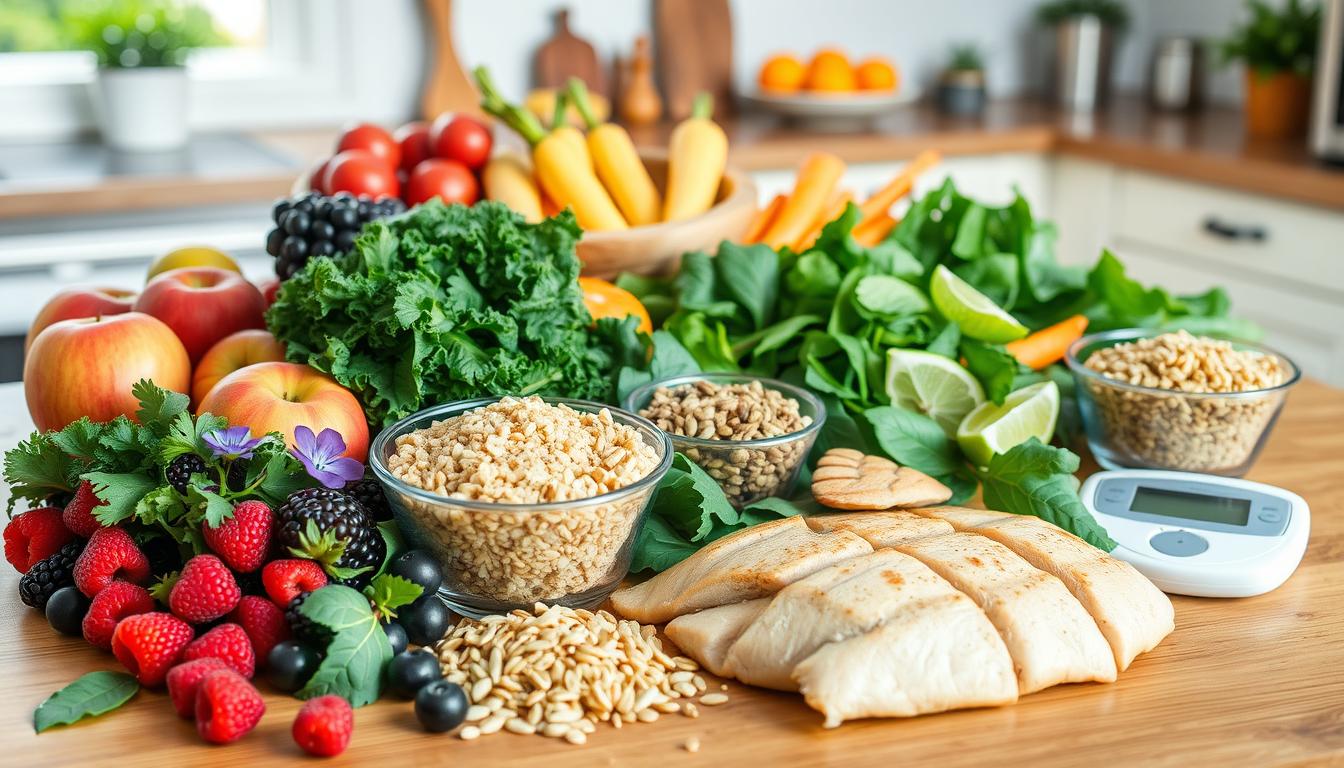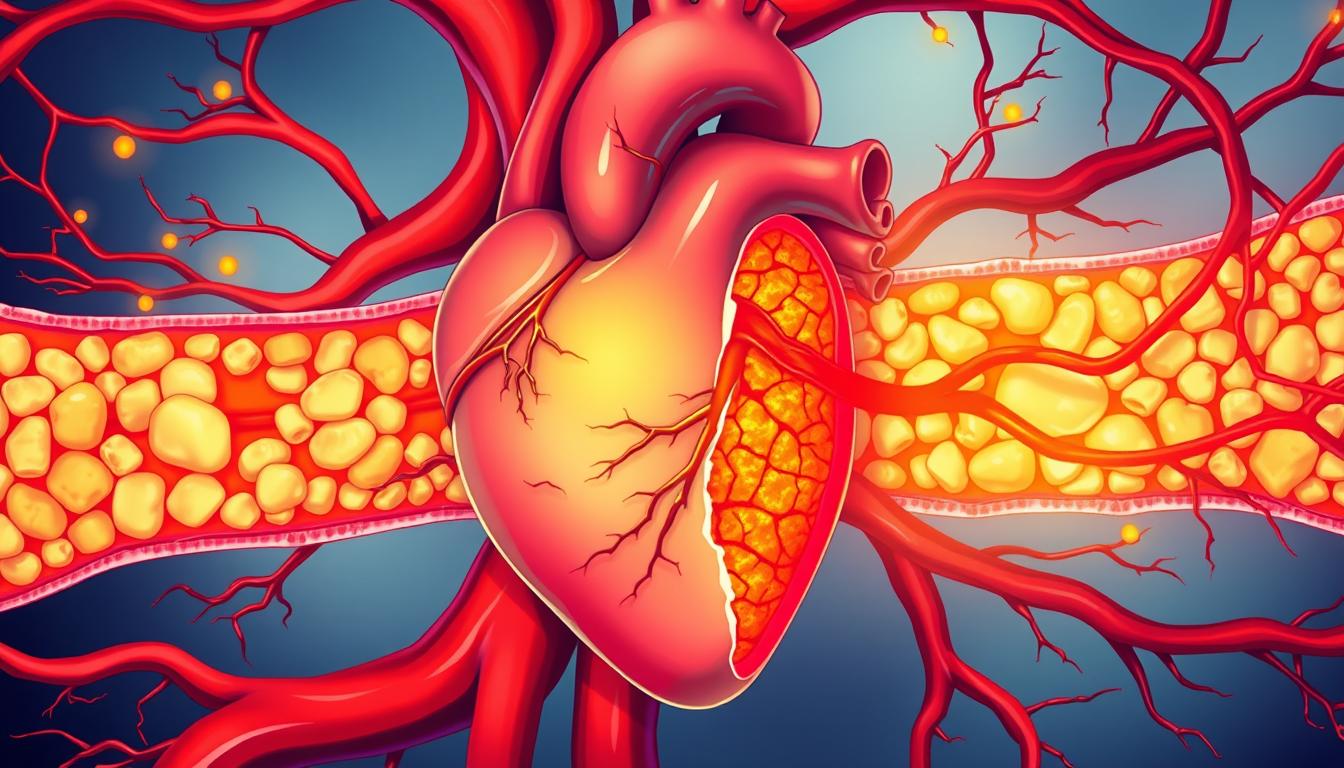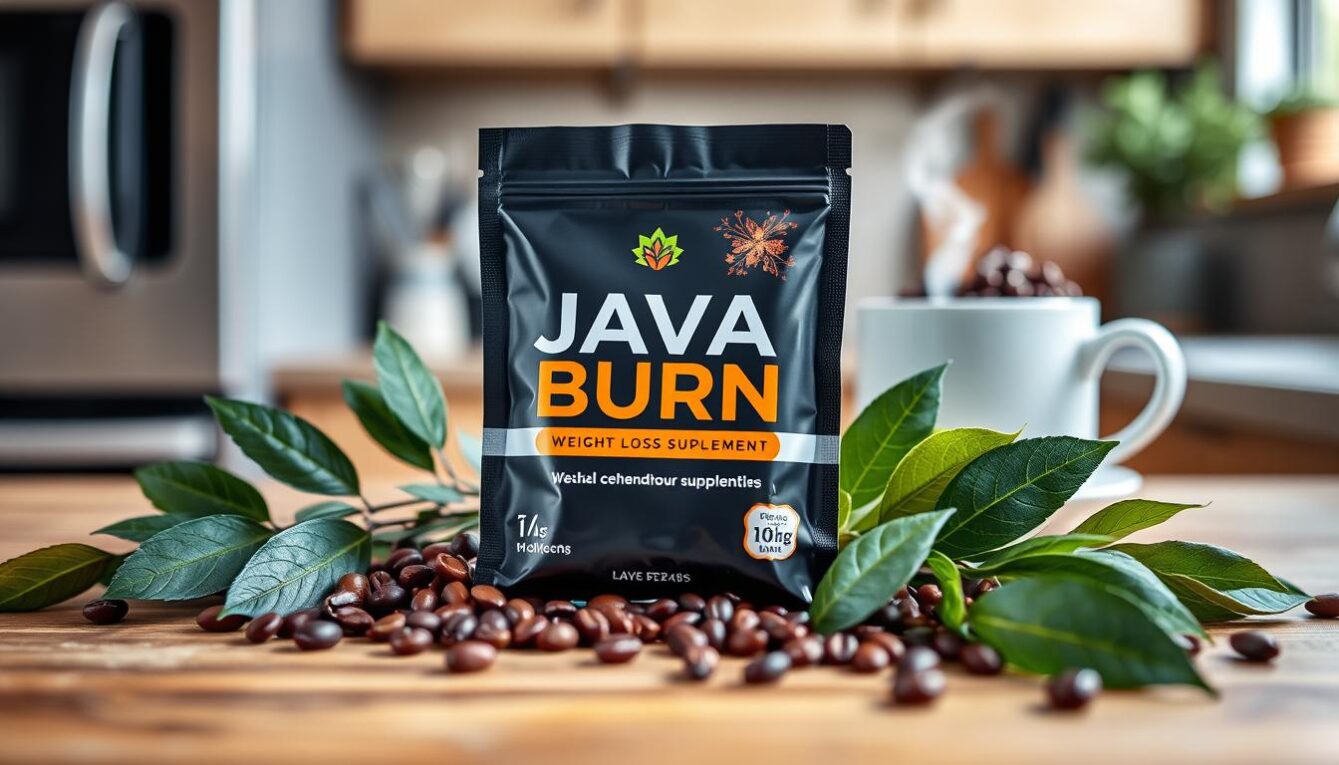Did you know nearly 38 million Americans have diabetes? About 90-95% of these cases are type 2 diabetes. This shows how important diet is in preventing this disease.
Creating the best diet plan to prevent diabetes is not just about cutting out food. It’s about making choices that help your body stay balanced. Eating healthy is key to managing blood sugar and lowering diabetes risk.
Your diet can change the game in preventing diabetes. By choosing the right foods, you can keep your health strong, feel more energetic, and lower your risk of this serious disease.
Key Takeaways
- Diabetes affects millions of Americans, making prevention crucial
- Diet plays a fundamental role in blood sugar management
- Healthy eating habits can significantly reduce diabetes risk
- Nutrition is a powerful tool in preventive healthcare
- Strategic food choices can protect long-term metabolic health
Understanding Diabetes Risk Factors and Prevention Through Diet
Diabetes is a big health problem in America. What you eat is very important in managing and preventing it. Knowing how food affects your health can help lower your diabetes risk.
Start by knowing your health risks. Things that make you more likely to get diabetes include:
- Family history of diabetes
- Age over 45
- Sedentary lifestyle
- Obesity
- High blood pressure
How Dietary Choices Impact Blood Sugar Control
Your diet affects how well your body controls blood sugar. Eating foods that raise blood sugar too fast is hard on your pancreas. Eating well helps keep your blood sugar stable and supports your body.
“What you eat today walks and talks tomorrow” – Nutritional Health Proverb
The Role of Preventive Nutrition
Preventive nutrition helps fight diabetes. Eating foods rich in nutrients and keeping a balanced diet can lower your diabetes risk. Choose whole grains, lean proteins, and lots of veggies to help your body stay healthy.
| Food Group | Blood Sugar Impact |
|---|---|
| Whole Grains | Stabilizes Blood Sugar |
| Lean Proteins | Slows Glucose Absorption |
| Green Vegetables | Low Glycemic Load |
Remember, every meal is an opportunity to nourish your body and protect your long-term health.
The Ultimate Diet Plan to Help Prevent Diabetes
Making a diet plan to prevent diabetes needs careful thought. Your meal planning should aim for balance. This helps control blood sugar and keeps your metabolism healthy.
“Prevention is always better than cure, especially when it comes to managing diabetes risk through diet.”
Important parts of a good diabetes prevention diet are:
- Maintaining balanced macronutrient ratios
- Practicing consistent portion control
- Prioritizing low-glycemic food choices
- Creating structured meal timing
Your meal planning should focus on whole, nutrient-rich foods. These foods help keep blood sugar stable and give you the nutrients you need.
| Diet Component | Key Benefits | Recommended Intake |
|---|---|---|
| Complex Carbohydrates | Steady energy release | 45-55% of daily calories |
| Lean Proteins | Muscle maintenance | 20-30% of daily calories |
| Healthy Fats | Hormonal balance | 25-35% of daily calories |
Starting a diet plan is a smart way to prevent diabetes. Knowing about nutrition and making smart food choices can lower your diabetes risk.
Essential Nutrients and Food Groups for Blood Sugar Control
Keeping your diet balanced is key to managing blood sugar. It helps prevent diabetes and keeps your blood glucose stable. This is important for your metabolic health.
Knowing the right nutrients can change how you control blood sugar. Let’s look at the main food groups for good health.
Complex Carbohydrates and Fiber Sources
Complex carbs are great for steady blood sugar. They give you energy and stop blood sugar from rising too fast.
- Whole grains like quinoa and brown rice
- Legumes such as lentils and chickpeas
- Vegetables with high fiber content
Lean Proteins and Healthy Fats
Protein and healthy fats are important for a diet that prevents diabetes. They slow down how fast glucose is absorbed. This gives you energy for a long time.
- Skinless chicken breast
- Fish rich in omega-3 fatty acids
- Nuts and seeds
- Avocados and olive oil
Vitamins and Minerals for Diabetes Prevention
Some vitamins and minerals are key for metabolic health and blood sugar control.
“Nutrition is the foundation of preventive healthcare” – Dr. Walter Willett, Harvard School of Public Health
- Chromium: helps insulin function
- Magnesium: supports glucose metabolism
- Vitamin D: improves insulin sensitivity
- Zinc: assists in insulin production
By eating foods rich in these nutrients, you can help your body manage blood sugar better. This is a strong way to keep your diet balanced.
Strategic Meal Planning and Portion Control

Managing diabetes starts with smart portion control and meal planning. How you eat affects your blood sugar and health. It’s key to balance your plate and control serving sizes to prevent and manage diabetes.
“Portion control is not about eating less, but about eating right.” – Diabetes Nutrition Expert
Effective portion control needs simple, doable strategies. Here are some tips to help you manage your meals:
- Use smaller plates to naturally reduce portion sizes
- Measure food servings using standard measuring tools
- Fill half your plate with non-starchy vegetables
- Practice mindful eating by eating slowly and paying attention to hunger signals
Diabetic meal planning means making balanced meals to keep blood sugar stable. Follow these important guidelines:
| Meal Component | Recommended Portion | Purpose |
|---|---|---|
| Vegetables | 1/2 plate | Low-calorie, high-fiber nutrition |
| Lean Protein | 1/4 plate | Steady energy and muscle support |
| Complex Carbohydrates | 1/4 plate | Controlled blood sugar release |
Remember, consistent portion control and thoughtful meal planning are your strongest allies in diabetes prevention and management.
Low-Glycemic Foods and Their Benefits
Knowing about low-glycemic foods is key for keeping blood sugar stable. It also helps lower the risk of diabetes. These foods help your body handle glucose better and keep your metabolism healthy.
The glycemic index (GI) shows how fast foods raise blood sugar. Low-glycemic foods are vital for managing blood sugar well.
Top Low-Glycemic Foods to Include
- Leafy green vegetables
- Nuts and seeds
- Lean proteins
- Whole grains
- Legumes
Meal Timing and Blood Sugar Management
Eating at the right times can really help control blood sugar. Eating small, balanced meals all day keeps glucose steady. It stops blood sugar from spiking too high.
| Food Category | Glycemic Index | Blood Sugar Impact |
|---|---|---|
| Spinach | Low (15) | Minimal |
| Almonds | Low (0) | Negligible |
| Sweet Potato | Medium (63) | Moderate |
Reading Food Labels for Glycemic Impact
It’s important to understand food labels to find low-glycemic foods. Look for:
- Total carbohydrate content
- Fiber amount
- Sugar types
“Knowing about low-glycemic foods lets you make smart food choices for better blood sugar control.” – Nutrition Expert
To add low-glycemic foods to your diet, choose wisely. Understand how different foods affect your body’s glucose use.
Lifestyle Modifications to Support Your Diet Plan

Preventing diabetes is more than just eating right. Your lifestyle choices are key to managing blood sugar and avoiding health risks. Adding smart weight management strategies can greatly boost your health and help prevent diabetes.
Exercise is a strong ally in fighting diabetes. It makes your body better at using insulin and boosts your metabolism. Here are some important lifestyle changes to make:
- Aim for 150 minutes of moderate-intensity exercise weekly
- Incorporate strength training 2-3 times per week
- Take regular walking breaks during sedentary work
Managing stress is also vital in your fight against diabetes. Too much stress can harm your blood sugar and health. Try these stress-reducing activities:
- Daily meditation
- Deep breathing exercises
- Regular sleep schedules
“Your daily habits shape your health more than occasional interventions.” – American Diabetes Association
Don’t forget about staying hydrated and getting enough sleep. Drinking enough water and sleeping 7-9 hours a night is crucial. Also, stick to a daily routine to help your body stay healthy.
By making these lifestyle changes, you’ll create a strong plan to prevent diabetes. It’s more than just what you eat.
Foods to Avoid and Smart Substitutions
Learning what foods can hurt your health is key. It’s hard to pick the right foods, especially to stop diabetes.
Hidden Sugar Sources to Watch For
Sugar hides in many foods, with names you don’t expect. To eat well, watch out for these hidden sugars:
- Processed condiments like ketchup and barbecue sauce
- Flavored yogurts and breakfast cereals
- Packaged fruit juices and smoothies
- Low-fat salad dressings
- Granola bars and protein bars
Healthy Alternative Options
Changing your diet can be easy and tasty. Try these healthy swaps:
- Replace soda with sparkling water and fresh fruit
- Swap sugary cereals for steel-cut oatmeal
- Choose whole fruits instead of fruit juices
- Use Greek yogurt instead of flavored varieties
Reading Nutrition Labels Effectively
Knowing how to read labels is important. Look for these things:
- Check total sugar content per serving
- Look for added sugars in ingredient lists
- Pay attention to serving sizes
- Understand different sugar nomenclature
“Knowledge is the first step in making healthier food choices. By understanding what’s in your food, you can take control of your nutrition.” – Nutrition Expert
Preventing diabetes begins with smart food choices and healthy habits.
Conclusion
Starting a diet plan to prevent diabetes needs commitment and smart food choices. Your first step is to see how food affects your health. This guide shows you how to keep your health safe for the future.
Choosing what you eat wisely is more than just avoiding sugar. It’s about living a healthy life that keeps your body in balance. What you eat can really help control your blood sugar and insulin levels. Eating foods rich in nutrients, watching your portion sizes, and eating at regular times helps fight diabetes.
Preventing diabetes is very powerful. Even small changes in your diet and lifestyle can make a big difference. Start by adding foods that don’t raise blood sugar quickly, eating more complex carbs, and choosing lean proteins. Every good choice you make brings you closer to a healthier life.
Your dedication to eating well and taking care of your health is key to avoiding diabetes. Keep learning, stay consistent, and work towards your diet goals with patience and determination. Your body will be grateful for your efforts to keep it healthy for years to come.













